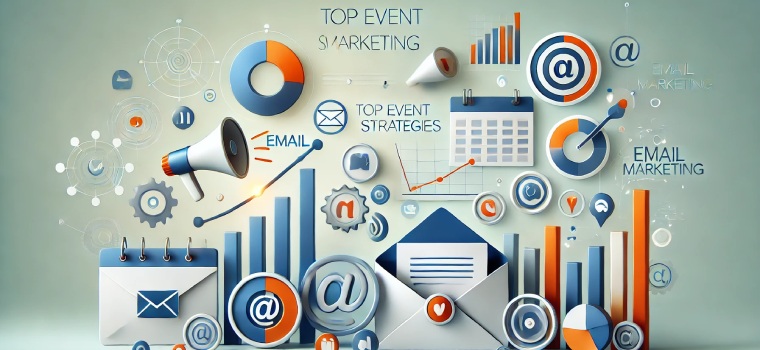Did you know that the average social media user sees anything from 6,000 to 10,000 ads a day? Thanks to the effectiveness of digital advertising, more businesses are using social media platforms to sell their products. While this may result in more business exposure, it can be a tad too overwhelming to social media users, who may feel bombarded with ads at every turn. That's why more businesses are turning to email marketing, as it is a direct way of communicating with buyer personas, which makes it more effective. We look at why event email marketing works and the strategies you can use to ensure your campaign delivers value.

Top Event Email Marketing Strategies
Email marketing is not only personable but also cost-effective and provides real-time insights. Used correctly, this is a great way to spread awareness about your upcoming event, build anticipation, and encourage people to sign up.
But how do you harness the power of this marketing strategy?
Get People's Attention from the Get-Go
Here is a number that may shock you - the average person receives anything from 100 to 120 emails in one day, a figure that excludes spam and does not account for occupation and personal habits. So, while you are not competing with thousands of ads, as is the case with social media, you have to put in effort to stand out from the fray.
You do this by coming up with a catchy subject line - this is the first thing that people see and the one that determines how invested they become in what's in the email. Of course, while rage-baiting and overly promotional messages may work on social media, many email recipients find them off-putting.
You want to find that sweet balance between boring and spam-like language. Here's an example: "Exclusive Networking Opportunities for Members - Save a Spot Now."
Ensure the Email Body is Appealing
Years ago, you could have run a successful email campaign using the plain old fonts default on most email providers. But now, people want more than a simple explanation of what the event will comprise - they want excitement from the minute they open that email to your official signoff. So, how do you make this happen?
- Use bold headers: Make it easy for people to navigate to the main sections. Some people may be short on time or attention and will want to skip to the main message.
- Ensure the template has clean sections: While you may want to include a lot of information about the event, keep the message and overall media minimal. Otherwise, you will have a template that looks so busy that people will have a hard time figuring out what's happening and what you need them to do.
- Include an appealing call to action (CTA) button. At the end of it all, you want people to sign up for the event. But this is only possible if you excite them and prompt them with words such as "save my spot" - it also helps to include some tidbits about what they stand to gain from the event. You can also create urgency by including notes such as "limited slots available."
Create Buyer Personas
A common mistake that people make is sending the same email to everyone. Say, for example, that you are opening a new gym and are targeting people living in Los Angeles aged 20 to 50. What the 20-year-olds need will differ from what the people in their 50s will need. So, if you send the same campaign to them, you will fail to touch on their pain points, which can result in less interest from your prospective attendees.
You can avoid this generalization by creating buyer personas where you segment your email recipients based on their demographics, interests, and overall behaviour. For instance, you can focus on trendy gym equipment for people in their 20s and on your health bar for people in their 50s. The more relevant that information is to a recipient, the more likely they are to act on your CTA.
Personalize the Messages
On social media, users are just one of many. While influencers and celebrities may have names for their followers, they refer to the whole group, which is highly generalized. So, you can imagine just how good it feels for someone to receive a message that addresses them by name. But don't just bank on the name alone. Follow up by addressing their past behaviours or their interests, which ties to the buyer personas in the previous point. For example, if someone has been a loyal customer for 6 months, acknowledge just how valuable they are to your business - it shows that you see them and they are not just another statistic on your mailing list.